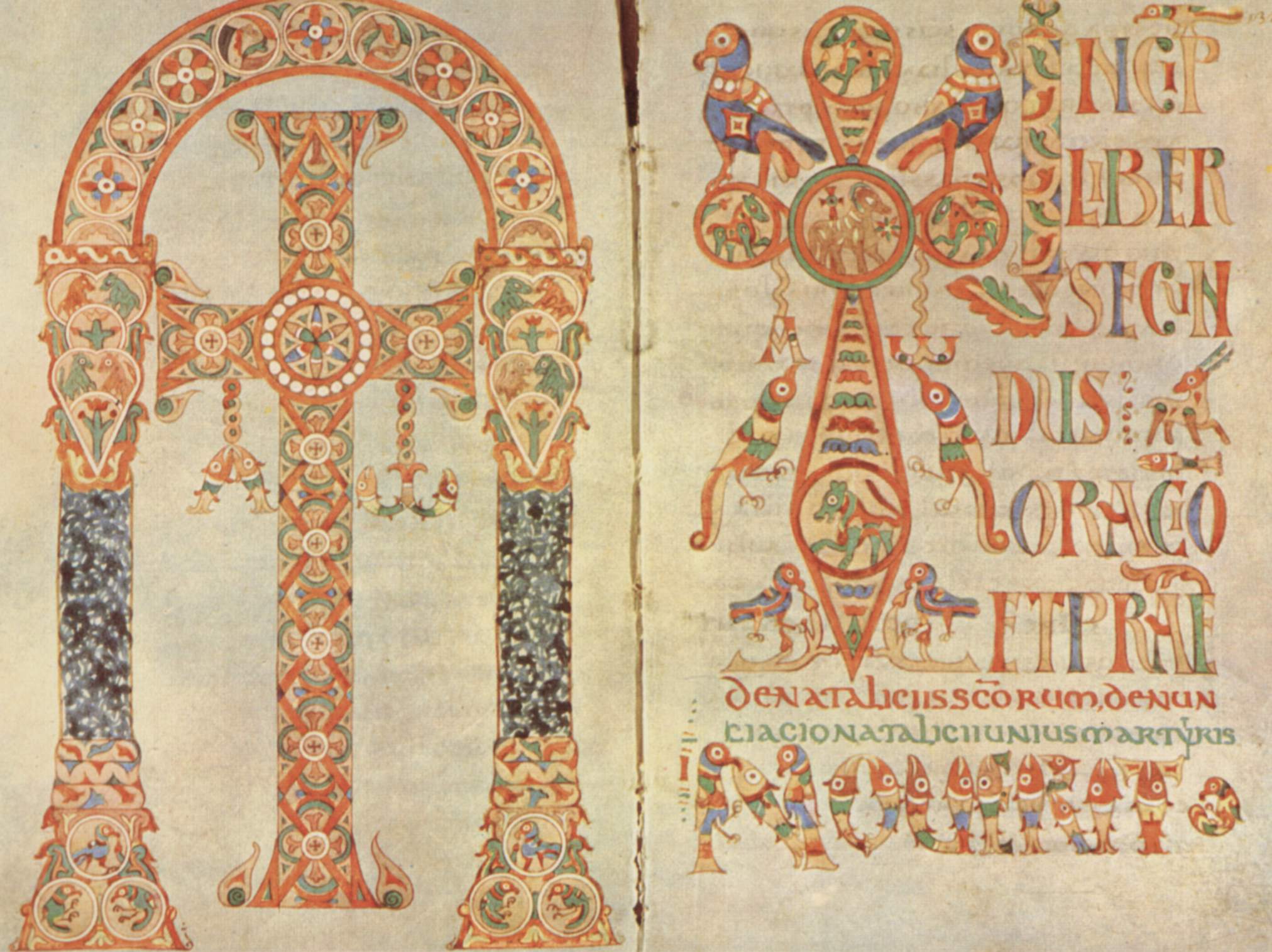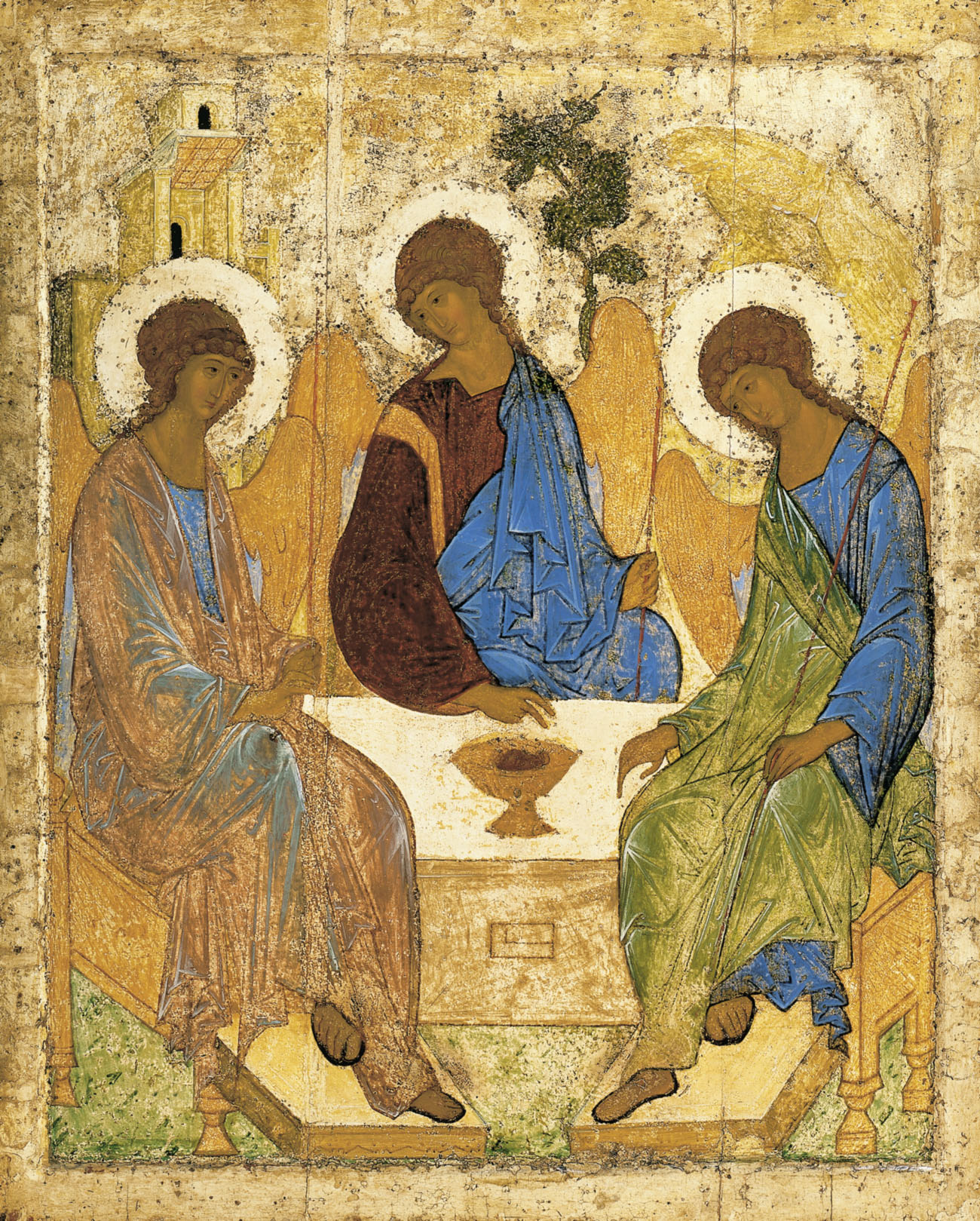|
Cherubikon
The Cherubikon ( Greek: χερουβικόν) is the usual Cherubic Hymn ( Greek: χερουβικὸς ὕμνος, Church Slavonic ) sung at the Great Entrance of the Byzantine liturgy. History Origin The cherubikon was added as a troparion to the Divine Liturgy under Emperor Justin II (565 – 578) when a separation of the room where the gifts are prepared from the room where they are consecrated made it necessary that the Liturgy of the Faithful, from which those not baptised had been excluded, start with a procession. This procession is known as the Great Entrance, because the celebrants have to enter the choir by the altar screen, later replaced by the iconostasis. The hymn symbolically incorporates those present at the liturgy into the presence of the angels gathered around God's throne.Parry (1999), p. 117. The chant genre '' offertorium'' in traditions of Western plainchant was basically a copy of the Byzantine custom, but there it was a proper mass chant which ... [...More Info...] [...Related Items...] OR: [Wikipedia] [Google] [Baidu] |
Great Entrance
In Eastern Orthodox and Byzantine Catholic churches, an entrance is a procession during which the clergy enter into the sanctuary through the Holy Doors. The origin of these entrances goes back to the early church, when the liturgical books and sacred vessels were kept in special storage rooms for safe keeping and the procession was necessary to bring these objects into the church when needed. Over the centuries, these processions have grown more elaborate, and nowadays are accompanied by incense, candles and liturgical fans. In the liturgical theology of the Eastern Orthodox Church, the angels are believed to enter with the clergy into the sanctuary, as evidenced by the prayers which accompany the various entrances. Divine Liturgy During the course of the Divine Liturgy (Eucharist), there are two entrances. Both of the Entrances, as well as the ritual of the Liturgy of Preparation, are viewed by liturgical scholars as later additions to the Liturgy, and may not have been used by ... [...More Info...] [...Related Items...] OR: [Wikipedia] [Google] [Baidu] |
Divine Liturgy
Divine Liturgy ( grc-gre, Θεία Λειτουργία, Theia Leitourgia) or Holy Liturgy is the Eucharistic service of the Byzantine Rite, developed from the Antiochene Rite of Christian liturgy which is that of the Ecumenical Patriarchate of Constantinople. As such, it is used in the Eastern Orthodox, the Greek Catholic Churches, and the Ukrainian Lutheran Church. Although the same term is sometimes applied in English to the Eucharistic service of Armenian Christians, both of the Armenian Apostolic Church and of the Armenian Catholic Church, they use in their own language a term meaning "holy offering" or "holy sacrifice". Other churches also treat "Divine Liturgy" simply as one of many names that can be used, but it is not their normal term. The Greek Catholic and Orthodox Churches see the Divine Liturgy as transcending time and the world. All believers are seen as united in worship in the Kingdom of God along with the departed saints and the angels of heaven. Everything ... [...More Info...] [...Related Items...] OR: [Wikipedia] [Google] [Baidu] |
Liturgy Of The Faithful
Divine Liturgy ( grc-gre, Θεία Λειτουργία, Theia Leitourgia) or Holy Liturgy is the Eucharistic service of the Byzantine Rite, developed from the Antiochene Rite of Christian liturgy which is that of the Ecumenical Patriarchate of Constantinople. As such, it is used in the Eastern Orthodox, the Greek Catholic Churches, and the Ukrainian Lutheran Church. Although the same term is sometimes applied in English to the Eucharistic service of Armenian Christians, both of the Armenian Apostolic Church and of the Armenian Catholic Church, they use in their own language a term meaning "holy offering" or "holy sacrifice". Other churches also treat "Divine Liturgy" simply as one of many names that can be used, but it is not their normal term. The Greek Catholic and Orthodox Churches see the Divine Liturgy as transcending time and the world. All believers are seen as united in worship in the Kingdom of God along with the departed saints and the angels of heaven. Everything ... [...More Info...] [...Related Items...] OR: [Wikipedia] [Google] [Baidu] |
Sanctus
The Sanctus ( la, Sanctus, "Holy") is a hymn in Christian liturgy. It may also be called the ''epinikios hymnos'' ( el, ἐπινίκιος ὕμνος, "Hymn of Victory") when referring to the Greek rendition. In Western Christianity, the ''Sanctus'' forms part of the Ordinary and is sung (or said) as the final words of the Preface of the Eucharistic Prayer of remembrance, consecration, and praise. The preface, which alters according to the season, usually concludes with words describing the praise of the worshippers joining with the angels, who are pictured as praising God with the words of the ''Sanctus''. In the Byzantine Rite and general Eastern Orthodox Christianity, the ''Sanctus'' is offered as a response by the choir during the Holy Anaphora. ''Tersanctus'' ("Thrice Holy") is another, rarer name for the Sanctus. The same name is sometimes used for the '' Trisagion''. Text In Greek ''Hágios, hágios, hágios, Kýrios Sabaṓth; plḗrēs ho ouranós kaí h ... [...More Info...] [...Related Items...] OR: [Wikipedia] [Google] [Baidu] |
Ambo (liturgy)
The ambon or ambo ( gr, ἄμβων, meaning "pulpit"; Slavonic: ''amvón'') in its modern usage is a projection coming out from the soleas (the walkway in front of the iconostasis) in an Eastern Orthodox, Oriental Orthodox and Eastern Catholic church. The ambon stands directly in front of the Holy Doors. It may be either rounded or square and has one, two, or three steps leading up to it. History Originally the ambon was an elevated platform, somewhat variable in location within the church (but typically found toward the center of the nave, or somewhat forward from there), where the scriptures were read during the Divine Liturgy. It is still so used for celebrations of the Liturgy of St James. It is a development from the bimah in the Jewish synagogue. In the Russian Orthodox Church, during Hierarchical services, the bishop will stand upon a raised platform ( ''kafedra'') in the center of the nave like the bimah of old. Originally used in both the East and West, the struct ... [...More Info...] [...Related Items...] OR: [Wikipedia] [Google] [Baidu] |
Domestikos
''Domestikos'' (; el, δομέστικος, from the la, domesticus, , of the household), in English sometimes heDomestic, was a civil, ecclesiastic and military office in the late Roman Empire and the Byzantine Empire. Military usage The ''domestikoi'' trace their ancestry to the ''protectores domestici'' guard unit of the Late Roman army, established in the late 3rd century. These were a corps of men that served as a staff to the Roman emperors, while also functioning as an officer school. These continued in existence in the Eastern Roman/Byzantine Empire until the late 6th century. In the Byzantine army, the old ''protectores domestici'' had vanished by the 7th century, and the name only remained as a title associated with certain guard units. Following the creation of the '' tagmata'' in the mid-8th century, four of them, the '' Scholai'', the '' Exkoubitoi'', the '' Hikanatoi'' and the '' Noumeroi'', as well as, uniquely, the '' thema'' of the Optimatoi, were led by a ''d ... [...More Info...] [...Related Items...] OR: [Wikipedia] [Google] [Baidu] |
Troparion
A troparion (Greek , plural: , ; Georgian: , ; Church Slavonic: , ) in Byzantine music and in the religious music of Eastern Orthodox Christianity is a short hymn of one stanza, or organised in more complex forms as series of stanzas. The wider meaning of troparion The word probably derived from a diminutive of the Greek ('something repeated', 'manner', 'fashion'), since the earliest function of the troparion was a refrain during the recitation of the cantica (biblical odes) and the psalms, as such the term was used as a synonym of . The early meaning of ''troparion'' was related to the monastic hymn book '' Tropologion'' or Troparologion. Hence its forms were manifold, they could be simple stanzas like apolytikia, theotokia, but also more elaborated homiletic poems like ''stichera'' composed in psalmodic hexameters (probably from ''stichos'', “verse”), or in a more complex meter like the odes composed in cycles called canon. Since these Tropologia in their earliest ... [...More Info...] [...Related Items...] OR: [Wikipedia] [Google] [Baidu] |
Gallican Rite
The Gallican Rite is a historical version of Christian liturgy and other ritual practices in Western Christianity. It is not a single rite but a family of rites within the Latin Church, which comprised the majority use of most of Western Christianity for the greater part of the 1st millennium AD. The rites first developed in the early centuries as the Syriac-Greek rites of Jerusalem and Antioch and were first translated into Latin in various parts of the Western Roman Empire Praetorian prefecture of Gaul. By the 5th century, it was well established in the Roman civil diocese of Gaul, which had a few early centers of Christianity in the south. Ireland is also known to have had a form of this Gallican Liturgy mixed with Celtic customs. History and origin The Gallican Rite was used from before the 5th century, and likely prior to the Diocletian reform in AD 293 Roman Gaul, until the middle or end of the 8th century. There is no information before the 5th century and very little t ... [...More Info...] [...Related Items...] OR: [Wikipedia] [Google] [Baidu] |
Anaphora (liturgy)
The Anaphora is the most solemn part of the Divine Liturgy, or the Holy Sacrifice of the Mass, a thanksgiving prayer by virtue of which the offerings of bread and wine are believed to be consecrated as the body and blood of Christ. This is the usual name for this part of the Liturgy in Greek-speaking Eastern Christianity. In the Eastern Syriac tradition ''Qudaša'' is its equivalent. The corresponding part in western Christian liturgy is nowadays most often called the Eucharistic Prayer. The Roman Rite from the 4th century until after Vatican II had a single such prayer, called the Canon of the Mass. "Anaphora" is a Greek word () meaning a "carrying up" (as distinguished from the use of the same word, then meaning a "carrying back", in rhetoric and linguistics), and so an "offering" (hence its use in reference to the offering of sacrifice to God). In the sacrificial language of the Greek version of the Old Testament known as the Septuagint, (prospherein) is used of the offerer's ... [...More Info...] [...Related Items...] OR: [Wikipedia] [Google] [Baidu] |
Trisagion
The ''Trisagion'' ( el, Τρισάγιον; 'Thrice Holy'), sometimes called by its opening line ''Agios O Theos'', is a standard hymn of the Divine Liturgy in most of the Eastern Orthodox, Western Orthodox, Oriental Orthodox, and Eastern Catholic churches. In churches which use the Byzantine Rite, the Trisagion is chanted immediately before the '' Prokeimenon'' and the Epistle reading. It is also included in a set of prayers named for it, called the Trisagion Prayers, which forms part of numerous services (the Hours, Vespers, Matins, and as part of the opening prayers for most services). It is most prominent in the Latin Church for its use on Good Friday. It is also used in the Liturgy of the Hours and in some Catholic devotions. Form of the prayer The Trisagion prayer is an ancient prayer in Christianity. In Greek: In Latin: In English - Literal Translation: In English - Common Liturgical Translation: In Aramaic: History Traditional origins The Gre ... [...More Info...] [...Related Items...] OR: [Wikipedia] [Google] [Baidu] |



